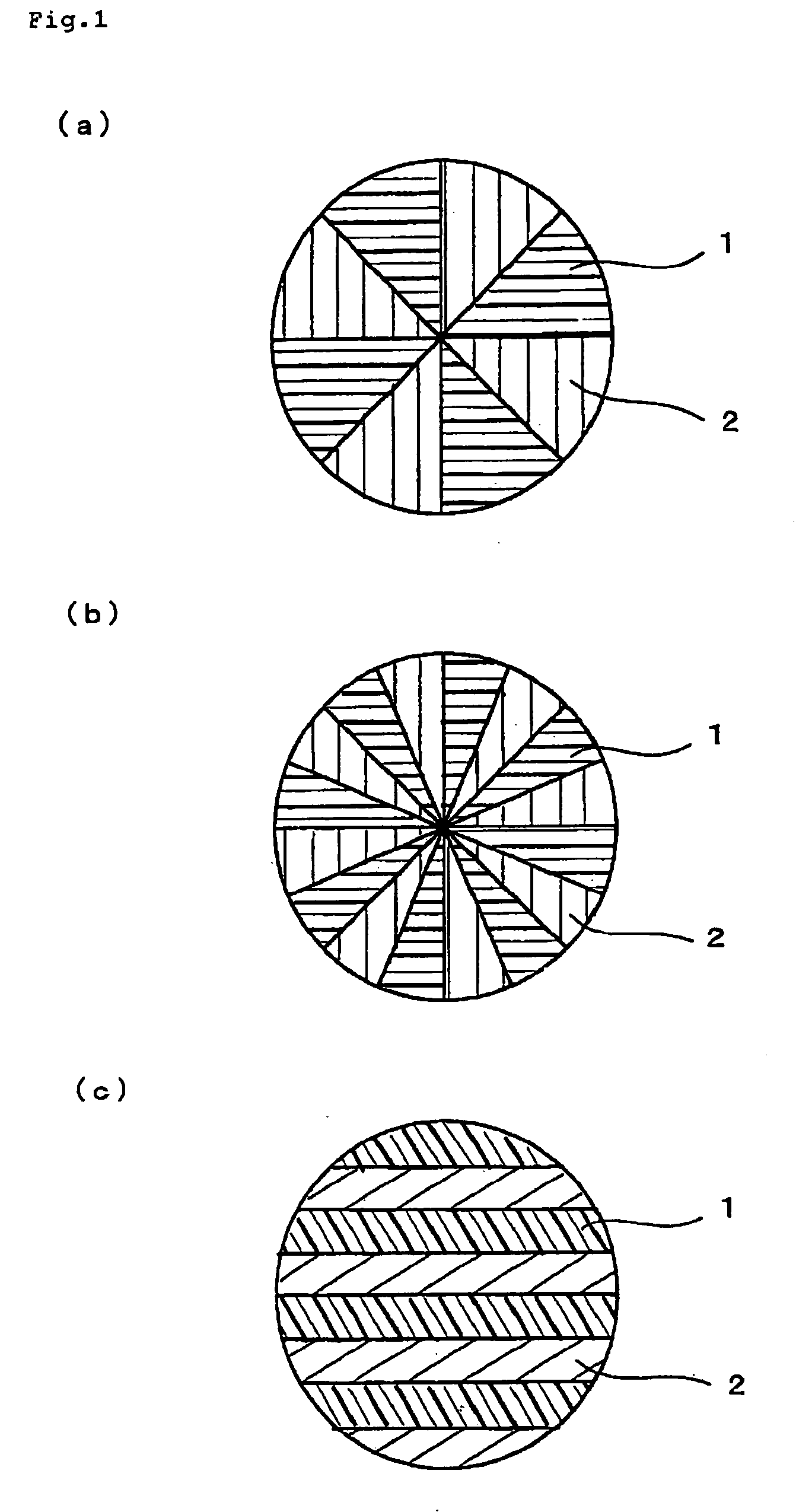Wiping sheet
a technology of wiping sheet and wavy paper, which is applied in the field of wiping sheet, can solve the problems of insufficient wiping ability of nonwovens, inability to use nonwovens, and affecting the use of nonwovens, etc., and achieves the effects of good wiping ability, excellent wiping ability, and good wiping ability
- Summary
- Abstract
- Description
- Claims
- Application Information
AI Technical Summary
Benefits of technology
Problems solved by technology
Method used
Image
Examples
embodiment 1
[0020] A wiping sheet of a nonwoven which is composed of a single ultrafine fiber layer is described as Embodiment 1. In the wiping sheet of this embodiment, ultrafine fibers exist in surfaces and inside of the sheet.
[0021] In this embodiment, the ultrafine fiber layer contains the ultrafine fibers whose fineness is not greater than 0.9 dtex, which are formed by splitting the first splittable fibers and the second splittable fibers. The splittable fiber is composed of a plurality of components and has a cross-sectional structure wherein at least one component is divided into two or more segments and at least a portion of each component is exposed on a surface of the fiber and the exposed portion extends continuously in the longitudinal direction of the fiber. Examples of the fiber cross-sectional structure of the splittable conjugate fibers composed of two resin components are shown in FIG. 1(a) to (c). The splittable conjugate fibers of these structures give ultrafine fibers havin...
embodiment 2
[0058] As Embodiment 2, a wiping sheet is described, wherein a ultrafine fiber layer is formed by ultrafine fibers that are formed by eluting a portion of conjugate fibers which are composed of components different in solubility to a solvent (including water). The techniques of forming the ultrafine fibers by utilizing the difference of resins in solubility to solvent are known, and any of the techniques can be employed in this embodiment. The components whose solubilities to solvent are different from each other may be conjugate-spun so that, for example, a sea-island cross-sectional structure is obtained or the structure as shown in FIGS. 1 to 3 is obtained. Particularly, the sea-island conjugate fiber is advantageous in a manufacturing process, since such a fiber can be handled as a large-fineness fiber until the fiber is subjected to a solvent treatment.
[0059] In this embodiment, it is required that at least two types of ultrafine fiber-generating conjugate fibers are employed,...
embodiment 3
[0062] As Embodiment 3, a wiping sheet composed of a plurality of ultrafine fiber layers. The wiping sheet of the present invention may be of a construction wherein a plurality of ultrafine fiber layers as described in connection with Embodiment 1 are stacked. In that case, two or more ultrafine fiber layers may be preferably formed of fiber webs whose ratios of the first splittable conjugate fiber to the second splittable conjugate fiber are different from each other, whereby a desired property can be conferred to the nonwoven.
[0063] The wiping sheet having two or more ultrafine fiber layers is preferably a three-layer structure which is composed of ultrafine fiber layers “SU” that constitute the nonwoven surfaces which contacts with a surface of an object, and a ultrafine fiber layer “IN” that constitutes the inner of the nonwoven. In that case, more fibers which result from the second splittable conjugate fibers preferably exist in the surfaces of the nonwoven and more fibers wh...
PUM
| Property | Measurement | Unit |
|---|---|---|
| melting point | aaaaa | aaaaa |
| melting points | aaaaa | aaaaa |
| length | aaaaa | aaaaa |
Abstract
Description
Claims
Application Information
 Login to View More
Login to View More - R&D
- Intellectual Property
- Life Sciences
- Materials
- Tech Scout
- Unparalleled Data Quality
- Higher Quality Content
- 60% Fewer Hallucinations
Browse by: Latest US Patents, China's latest patents, Technical Efficacy Thesaurus, Application Domain, Technology Topic, Popular Technical Reports.
© 2025 PatSnap. All rights reserved.Legal|Privacy policy|Modern Slavery Act Transparency Statement|Sitemap|About US| Contact US: help@patsnap.com

